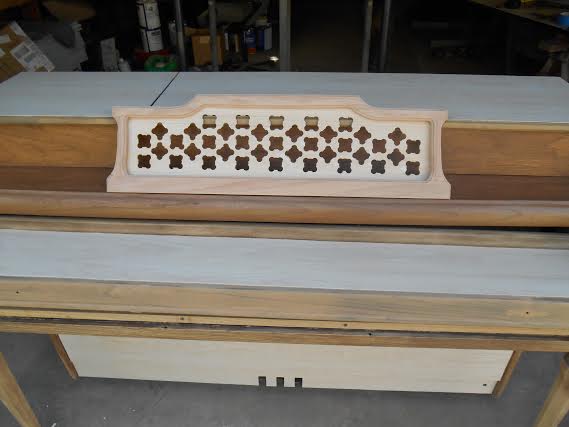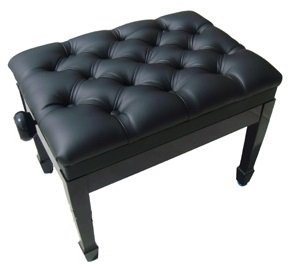Piano Refinishing
Professional Restoration
of a Diamond in the Rough
Piano refinishing is the process of transforming an old, grim-looking, worn out piano into a magnificent, glistening, awe-inspiring masterpiece.
The end result is oftentimes so staggering and impressive to behold, that many have questioned whether or not the piano had ever looked this perfect, when first manufactured.
If you own a piano that needs more than a simple touch up along the outer case, you may be wondering, "Why should I hire a professional to refinish my piano?"
Whether you are looking to refinish your piano to simply add a touch of class to your living room, or to enhance the stately appearance of a brightly lit concert stage, then, it is in your best interests to investigate the future transformation of your piano, which oftentimes, outlives most other possessions in existence today.
At the very least, piano refinishing can save you the expense of purchasing a brand new piano in order to replace the old one.
Instead of getting rid of your piano, it can be given a new life by means of piano refinishing and restoration work. Of course, this is not a simple thing to do.
Piano refinishing is a difficult job requiring extensive craftsmanship skills. It can also expose you to certain dangers, such as harmful fumes and loose debris. But the process is certainly worth the job involved, especially if you are refinishing a prized family heirloom (antique piano) .
Before you try your hand at refinishing, you should strongly consider taking the piano to a professional piano refinisher and expert rebuilder to inspect its condition.
Piano Refinishing:
The Process
The cost of having your piano restored by a professional can oftentimes be considerably less than buying a new piano.
If the piano has major defects such as a broken plate or missing keys, then it will definitely need a professional to get it working properly again.
The good news is that if the piano was made by a quality manufacturer {Steinway & Sons, Baldwin, Chickering, Bluthner, Knabe, Mason & Hamlin, Yamaha, Kawai) then there is an excellent chance it can be restored to a functional condition once again.
If you are still unconvinced, then consider the work that goes into a piano refinishing job.
(1) The first step is to mask off and protect open areas of the piano - such as the keys and internal working action. The old lacquer finish is stripped off from the instrument's wood surface.
(2) Following this step, you will have to perform further prep work on the wood veneer, which requires you to do a thorough job of cleaning and sanding the wooden surface. You will need to sand each section of the wood's surface to a dead flat finish.
(3) Next, you will need to correct structural problems such as dings, scratches, blemishes, and the like. It is important to fix all such defects before ANY stain or finish is applied to the hard surface.
(4) Your next step is to apply pore filler, using a hand brush. You let the pore filler dry partially, and then you wipe it off, leaving only a small amount behind. You then leave it to dry fully.
(5) The following step is to stain the wood, if necessary, and then wait for the stain to dry.
(6) Finally, after every square inch has been inspected and prepped, several coats of lacquer is applied to the surface. This will take at least three days to complete, as you have to be careful about lacquer fumes.
As with every skill truly worth mastering, learning how to properly and carefully refinish a piano, takes many years of hard work and experience to master.
Above all, piano refinishing may be a job best left to professionals, with decades of trade experience.
HAVE A QUESTION? Contact Us, HERE.
SUBSCRIBE TO OUR FREE EZINE:
Support our site at no cost to you. Make your Amazon purchases by clicking through this link, here.








 Click Here to View our Terms and Conditions
Click Here to View our Terms and Conditions